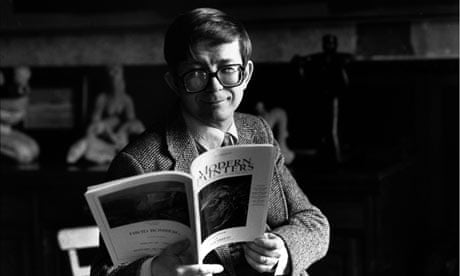Do art critics have a point any more? Can they contribute anything to the development of art? For a long time I've ducked this question. If you'd asked me any time over the past few years, I'd have replied that criticism does not seriously influence art. It has its own justification, however, as literature. If literature seems a pompous word, let's say entertainment. The appetite to read about art is almost as insatiable as the need to look at it; the critic provides a service that gives a chance to talk, think and tell stories about art and artists. Maybe it doesn't have any impact on art but it does occupy a place in the culture. That's what I would have said, until recently.
But that's a weak defence of criticism. The truth is that critics have been in retreat for a long time. In British art, they faced a cataclysmic loss of standing just before I came on the scene. When I was a student, the art critic whose books I bought was Peter Fuller, founder of the magazine Modern Painters and a savage critic of most trends in contemporary art. I enjoyed the provocative seriousness of his essays. I also loved the writing of Robert Hughes, another critic whose eloquence was - and is - very much at the expense of current art.
Not much newspaper criticism comes near their mark, but what critics did share, in the late 1980s, was a similar scepticism about new fashions, a "seriousness" defined by suspicion. And of course, history played a joke on these critics - even on Fuller and Hughes. While high moral disdain for shallow modern art was pouring from the printing presses, a generation of British artists led by Damien Hirst were getting away with anything they wanted - again and again and again. Words were crushed by images. Critics were reduced to the status of promoters. They had no other role.
Today I think there is an opportunity for critics again - and a need. The sheer volume and range of art that we're fed in a culture obsessed with galleries is so vast and confusing that a critic can get stuck in and make a difference. It really is time to stand up for what is good against what is meretricious. And it really is possible to find examples of excellence as well as stupidity. In other words, this is a great time to be a critic - to try to show people what really matters.
Yes, there's a staggering volume of mediocre art being talked up by fools. But there are real talents and real ideas too. The critic's task is to identify what is good and defend it come hell or high water – and to honestly denounce the bad. Art history can help in this task by enriching your perspective. Writing can give you a flexibility in how and when you want to engage. But engage we must. Engage we will.

Comments (…)
Sign in or create your Guardian account to join the discussion